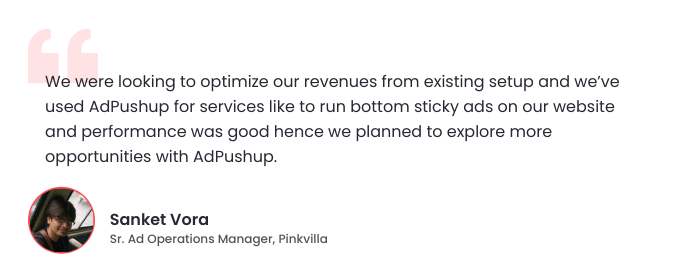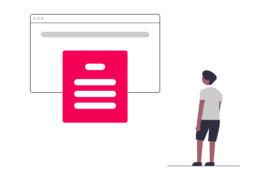What is DFP Safe Frame? Learn the benefits of using Safe Frames in ad serving and how they improve data security for publishers and website users.

Safe Frames allow enhanced delivery of ads and precise measurement of impressions using the API-enabled iFrame technology. It is considered to be a safe method for serving ads that protects both publishers and users.
In more technical terms, Safe Frame provides an open line of communication between publisher’s content and advertiser’s code. This facilitates the sharing of ad transactions data while preventing sensitive user information from getting shared.
Let’s Start With iFrame
iFrame provides a dedicated space or frame for displaying ads on the publisher’s website. Advertisers and ad networks can access this space by putting their code within the iFrame container. The iFrame acts as a window on the publisher’s website through which a visitor can view ads. This frame does not affect the rest of the content on the webpage.
But iFrame has its limitations. While it offers a dedicated space for ads, the advertiser cannot make changes to the shape and size of the iFrame as per their requirement. Implementing rich media ads is also not possible using the iFrame. This is a major drawback of the iFrame.
Using JavaScript to Serve Rich Media Ads in iFrames
The issues presented by iFrame can be resolved if advertisers and ad networks use JavaScript for ad delivery. Using JavaScript, interactive ads of any shape or size can be placed on the website, even if it is limited by the iFrame.
Then what is the need for Safe Frame?
In order to work, JavaScript reads the information presented on the webpage. JavaScript can extract many types of data from a webpage including sensitive publisher data and visitor details. This data can be usernames, passwords, and even banking details; this can compromise the privacy and security of users on the publisher’s webpage.
If not managed well, JS can cause major security issues. Now the questions that arise are:
- How can a publisher trust the advertiser or ad network?
- Is there any other mode available to display ads without risking data breach?
- How to resolve the security issues associated with ad display?
The answer to all these questions is Safe Frame.
What is Safe Frame and Safe Frame Container?
The dedicated space provided by publisher on their web page is coded using <iframe> in HTML. Ad code provided by the ad network is placed inside the <iframe>.
Using Safe Frame technology, <iframe> can render rich media ads coded using JavaScript without leaking any sensitive data.
In order to use Safe Frame, publishers are required to update their website to render ads inside the Safe Frame Container. However, if you use GPT (Google Publisher Tags), Safe Frames are enabled by default.
You can go further and configure creatives to use Safe Frames in Google Publisher Tags.

How to Implement Safe Frame
Using the Safe Frame, advertisers and ad networks can publish ads containing rich interactive media files. And the publisher doesn’t have to worry about the security of website or user data.
Safe Frame live inside the iframe and provide secure display advertising on publisher hosted page. In order to implement Safe Frame on webpage, use Safe Frame compliant Ad Manager such as Google Ad Manager (also known as DFP). After that, reach out to all your ad networks offering Safe Frame advertising. Finally, implement Safe Frame Ads onto your site.
While using DFP (DoubleClick for Publisher), you need to simply click on the checkbox “Serve into a Safe Frame”. It is as easy as that. However, you are required to create an ad that is Safe Frame compliant. To test whether the ad is compatible to put in the Safe Frame, you can use the service provided by safeframes.net
Why Use DFP Safe Frame For Display Advertising?
The most important benefits of using DFP Safe Frames are security for the publishers and transparency of impressions. Here are some additional benefits of DFP Safe Frames:
- Minimize or Remove Mobile Redirection: Many publishers have complaints about mobile redirection when using DFP services. With the help of Safe Frame, the flexibility of the ads can be restricted which can minimize malvertising due to redirection.
- Standardization of Ad Layouts: Ads designed for Safe Frame can be placed on any webpage that has a Safe Frame compliant iFrame. Due to this, advertisers are required to create standard ads that can be provided to multiple publishers.
- Improved Data Security: Using JavaScript, an advertiser or ad network can access any information from a webpage. However, a safe frame allows the publisher to restrict access to sensitive information such as passwords, credit card details, and more.
- Better Publisher Control: Apart from sensitive user information, publishers can also set limits on all kinds of data collected by the ad network related to user behavior and even ad impressions. Moreover, the publisher has control over the information being displayed to visitors via ads.
- Enhanced Monetization: The implementation of Safe Frame minimizes the operational cost of implementation of ads. Again, the publisher has the control to allow rich media ads into their iFrame window, resulting in more earning from rich media ads.
Conclusion
Publishers constantly worry about the safety of their data presented on the webpages. Especially when they are allowing various ad networks to put a piece of code on their site. Such security issues can be solved with the use of DFP Safe Frame compliant ads on web pages.
FAQs
API-enabled iFrame technology allows Safe Frames to deliver ads and measure impressions more precisely. Both publishers and users are protected by this method of serving ads.
SafeFrame is an API-capable iframe that offers a unified communication channel between advertisers and publishers.
Publishers can benefit from SafeFrames in the following ways.
i. A greater sense of control
ii. A higher level of efficiency
iii. Protection of users

Shubham is a digital marketer with rich experience working in the advertisement technology industry. He has vast experience in the programmatic industry, driving business strategy and scaling functions including but not limited to growth and marketing, Operations, process optimization, and Sales.








1 Comment
I am using Google DoubleClick for publishers for a couple of day with the Google AdSense ad code ad 3rd party ad publishers. But when I am using the third party Google AdSense integration it says I need to modify the ad code with some macros. Can you help me with the tracking codes with external macro keys?